- Clone
- Bu15 (See other available formats)
- Regulatory Status
- RUO
- Workshop
- V S143
- Other Names
- Integrin αx subunit, ITGAX, CR4, p150
- Isotype
- Mouse IgG1, κ
- Ave. Rating
- Submit a Review
- Product Citations
- 11 publications
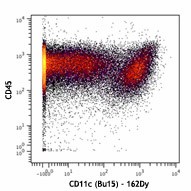
| Cat # | Size | Price | Quantity Check Availability | Save | ||
|---|---|---|---|---|---|---|
| 337221 | 100 µg | 113€ | ||||
CD11c is a 145-150 kD type I transmembrane glycoprotein also known as integrin αx and CR4. CD11c non-covalently associates with integrin β2 (CD18) and is expressed on monocytes/macrophages, dendritic cells, granulocytes, NK cells, and subsets of T and B cells. CD11c has been reported to play a role in adhesion and CTL killing through its interactions with fibrinogen, CD54, and iC3b.
Product DetailsProduct Details
- Verified Reactivity
- Human
- Antibody Type
- Monoclonal
- Host Species
- Mouse
- Formulation
- Phosphate-buffered solution, pH 7.2, containing 0.09% sodium azide and EDTA.
- Preparation
- The antibody was purified by affinity chromatography.
- Concentration
- 1.0 mg/ml
- Storage & Handling
- The antibody solution should be stored undiluted between 2°C and 8°C.
- Application
-
FC - Quality tested
CyTOF® - Verified - Recommended Usage
-
This product is suitable for use with the Maxpar® Metal Labeling Kits. For metal labeling using Maxpar® Ready antibodies, proceed directly to the step to Partially Reduce the Antibody by adding 100 µl of Maxpar® Ready antibody to 100 µl of 4 mM TCEP-R in a 50 kDa filter and continue with the protocol. Always refer to the latest version of Maxpar® User Guide when conjugating Maxpar® Ready antibodies.
- Application Notes
-
Clone Bu15 has a different binding epitope than clone 3.9. The binding of Bu15 with CD11c is divalent cation independent. Additional reported applications (for the relevant formats of this clone) include: inhibition of CD11c mediated adhesion and stimulation of chemokine production by monocytes.
- Additional Product Notes
-
Maxpar® is a registered trademark of Standard BioTools Inc.
-
Application References
(PubMed link indicates BioLegend citation) -
- Sadhu C, et al. 2008. J. Immunoass. Immunoch. 29:42.
- Rezzonico R, et al. 2001. Blood 97:2932.
- Sadhu C, et al. 2007. J. Leukoc. Biol. 81:1395.
- Yoshino N, et al. 2000. Exp. Anim. (Tokyo) 49:97. (FC)
- Product Citations
-
- RRID
-
AB_2562834 (BioLegend Cat. No. 337221)
Antigen Details
- Structure
- Integrin, type I transmembrane glycoprotein, associates with integrin β2 (CD18), 145-150 kD
- Distribution
-
Myeloid, dendritic cells, NK cells, B cells and T cell subsets
- Function
- Adhesion, CTL killing Ligand Receptor: CD54, fibrinogen, iC3b, ICAM-1, ICAM-4 Antigen
- Cell Type
- B cells, Dendritic cells, Neutrophils, NK cells, T cells
- Biology Area
- Cell Biology, Costimulatory Molecules, Immunology, Neuroscience, Neuroscience Cell Markers
- Molecular Family
- Adhesion Molecules, CD Molecules
- Antigen References
-
1. Petty H. 1996. Immunol. Today 17:209.
2. Springer T. 1994. Cell 76:301.
3. Ihanus E, et al. 2007. Blood 109:802-810. - Gene ID
- 3687 View all products for this Gene ID
- UniProt
- View information about CD11c on UniProt.org
Related FAQs
- Can I obtain CyTOF data related to your Maxpar® Ready antibody clones?
-
We do not test our antibodies by mass cytometry or on a CyTOF machine in-house. The data displayed on our website is provided by Fluidigm®. Please contact Fluidigm® directly for additional data and further details.
- Can I use Maxpar® Ready format clones for flow cytometry staining?
-
We have not tested the Maxpar® Ready antibodies formulated in solution containing EDTA for flow cytometry staining. While it is likely that this will work in majority of the situations, it is best to use the non-EDTA formulated version of the same clone for flow cytometry testing. The presence of EDTA in some situations might negatively affect staining.
- I am having difficulty observing a signal after conjugating a metal tag to your Maxpar® antibody. Please help troubleshoot.
-
We only supply the antibody and not test that in house. Please contact Fluidigm® directly for troubleshooting advice: http://techsupport.fluidigm.com/
- Is there a difference between buffer formulations related to Maxpar® Ready and purified format antibodies?
-
The Maxpar® Ready format antibody clones are formulated in Phosphate-buffered solution, pH 7.2, containing 0.09% sodium azide and EDTA. The regular purified format clones are formulated in solution that does not contain any EDTA. Both formulations are however without any extra carrier proteins.
Other Formats
View All CD11c Reagents Request Custom ConjugationCustomers Also Purchased
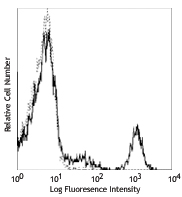
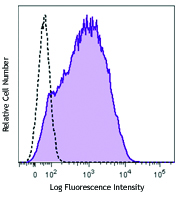
Compare Data Across All Formats
This data display is provided for general comparisons between formats.
Your actual data may vary due to variations in samples, target cells, instruments and their settings, staining conditions, and other factors.
If you need assistance with selecting the best format contact our expert technical support team.
-
APC/Cyanine7 anti-human CD11c
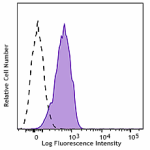
Human peripheral blood granulocytes stained with CD11c (clon... -
Purified anti-human CD11c
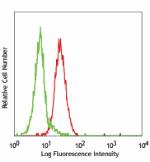
Human peripheral blood granulocytes stained with purified Bu... -
PE anti-human CD11c
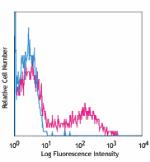
Human peripheral blood lymphocytes stained with Bu15 PE -
APC anti-human CD11c
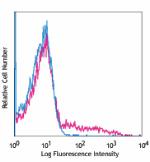
Human peripheral blood lymphocytes stained with Bu15 APC -
PerCP/Cyanine5.5 anti-human CD11c
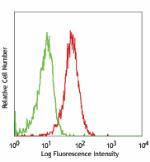
Human peripheral blood granulocytes stained with Bu15 PerCP/... -
Pacific Blue™ anti-human CD11c
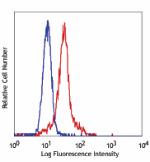
Human peripheral blood granulocytes stained with Bu15 Pacifi... -
FITC anti-human CD11c

Human peripheral blood monocytes stained with BU15 FITC. -
PE/Cyanine7 anti-human CD11c
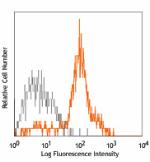
Human peripheral blood monocytes stained with Bu15 PE/Cyanin... -
Alexa Fluor® 700 anti-human CD11c
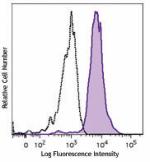
Human peripheral blood monocytes were stained with CD11c (cl... -
Purified anti-human CD11c (Maxpar® Ready)
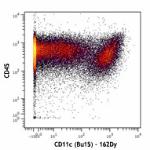
Human PBMCs stained with 154Sm-anti-CD45 (HI30) and 162Dy-an... -
Brilliant Violet 421™ anti-human CD11c
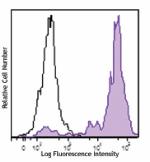
Human peripheral blood monocytes were stained with CD11c (cl... -
PE/Dazzle™ 594 anti-human CD11c
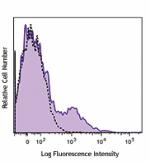
Human peripheral blood lymphocytes were stained with CD11c (... -
Biotin anti-human CD11c
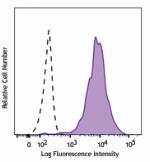
Human peripheral blood monocytes were stained with biotinyl... -
Alexa Fluor® 647 anti-human CD11c
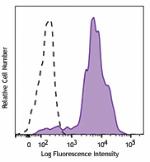
Human peripheral blood monocytes were stained with CD11c (cl... -
PerCP anti-human CD11c
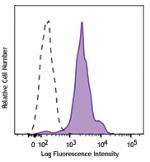
Human peripheral blood monocytes were stained with CD11c (cl... -
Alexa Fluor® 488 anti-human CD11c
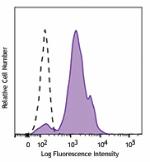
Human peripheral blood monocytes were stained with CD11c (cl... -
Brilliant Violet 650™ anti-human CD11c

Human peripheral blood monocytes were stained with CD11c (cl... -
APC anti-human CD11c

Typical results from human peripheral blood lymphocytes stai... -
PE anti-human CD11c

Typical results from human peripheral blood lymphocytes stai... -
APC/Fire™ 750 anti-human CD11c
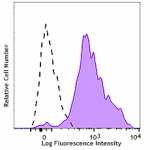
Human peripheral blood monocytes were stained with anti-huma... -
PE/Cyanine7 anti-human CD11c

Typical results from human peripheral blood monocytes staine... -
PerCP/Cyanine5.5 anti-human CD11c
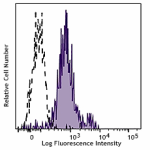
Typical results from human peripheral blood monocytes staine... -
Pacific Blue™ anti-human CD11c
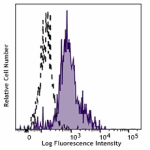
Typical results from human peripheral blood monocytes staine... -
GMP PE anti-human CD11c
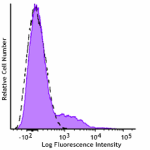
Typical results from human peripheral blood lymphocytes stai... -
GMP APC anti-human CD11c

Typical results from human peripheral blood lymphocytes stai... -
Spark Blue™ 515 anti-human CD11c

Human peripheral blood cells were surface stained with (left... -
Spark YG™ 593 anti-human CD11c

Human peripheral blood lymphocytes were stained with anti-hu... -
GMP Pacific Blue™ anti-human CD11c
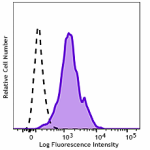
Typical results from human peripheral blood monocytes staine... -
GMP PerCP/Cyanine5.5 anti-human CD11c
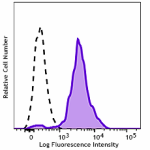
Typical results from human peripheral blood monocytes staine... -
PE/Fire™ 640 anti-human CD11c

Human peripheral blood lymphocytes were stained with anti-hu... -
PE/Fire™ 700 anti-human CD11c

Human peripheral blood cells were stained with anti-human CD... -
Brilliant Violet 711™ anti-human CD11c

Human peripheral blood lymphocytes were stained with anti-hu... -
Brilliant Violet 785™ anti-human CD11c

Human peripheral blood lymphocytes were stained with anti-hu... -
Brilliant Violet 605™ anti-human CD11c

Human peripheral blood lymphocytes were stained with anti-hu...

 Login / Register
Login / Register 




















Follow Us